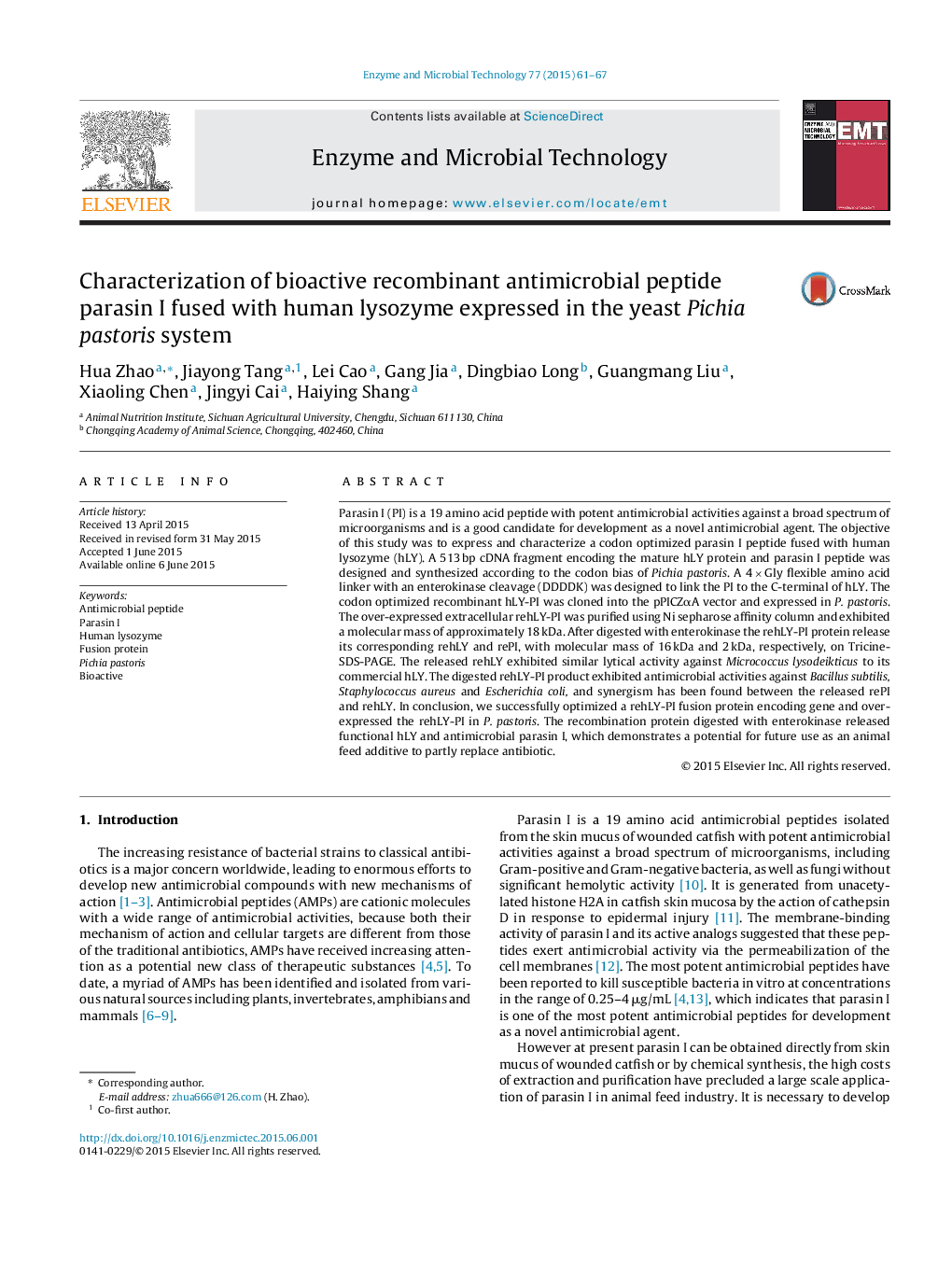| Article ID | Journal | Published Year | Pages | File Type |
|---|---|---|---|---|
| 16959 | Enzyme and Microbial Technology | 2015 | 7 Pages |
•Codon optimized parasin I fused with human lysozyme was expressed in Pichia pastoris.•The recombinant protein was successfully expressed and purified in a high yield.•The fushion protein released functional rePI and rehLY cleavage by enterokinase.•The combination of rePI and rehLY exhibited enhanced antimicrobial activities.
Parasin I (PI) is a 19 amino acid peptide with potent antimicrobial activities against a broad spectrum of microorganisms and is a good candidate for development as a novel antimicrobial agent. The objective of this study was to express and characterize a codon optimized parasin I peptide fused with human lysozyme (hLY). A 513 bp cDNA fragment encoding the mature hLY protein and parasin I peptide was designed and synthesized according to the codon bias of Pichia pastoris. A 4 × Gly flexible amino acid linker with an enterokinase cleavage (DDDDK) was designed to link the PI to the C-terminal of hLY. The codon optimized recombinant hLY-PI was cloned into the pPICZαA vector and expressed in P. pastoris. The over-expressed extracellular rehLY-PI was purified using Ni sepharose affinity column and exhibited a molecular mass of approximately 18 kDa. After digested with enterokinase the rehLY-PI protein release its corresponding rehLY and rePI, with molecular mass of 16 kDa and 2 kDa, respectively, on Tricine-SDS-PAGE. The released rehLY exhibited similar lytical activity against Micrococcus lysodeikticus to its commercial hLY. The digested rehLY-PI product exhibited antimicrobial activities against Bacillus subtilis, Staphylococcus aureus and Escherichia coli, and synergism has been found between the released rePI and rehLY. In conclusion, we successfully optimized a rehLY-PI fusion protein encoding gene and over-expressed the rehLY-PI in P. pastoris. The recombination protein digested with enterokinase released functional hLY and antimicrobial parasin I, which demonstrates a potential for future use as an animal feed additive to partly replace antibiotic.
